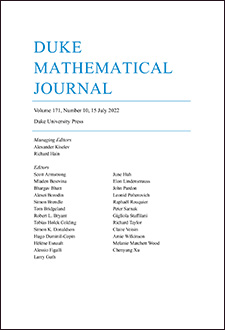Abstract
In this paper we give explicit lower bounds for an integer m to be represented by a positive definite integral quadratic form Q in n≥3 variables defined over ℚ. As an example, we apply these bounds to answer affirmatively the long-standing conjecture of Kneser that the only positive integers not represented by x2+3y2+5z2+7w2 are 2 and 22.
When n=3, the existence of spinor square classes and the possible existence of a Siegel zero complicates the estimate and requires us to restrict m to a finite union of square classes in order to obtain explicit constants. In this setting, we obtain a lower bound and asymptotics for the number of representations of m by Q, even within a spinor square class.
These methods can be easily generalized to obtain similar results for the representability of integers by a totally definite quadratic form over a totally real number field, and we carry out our local analysis in this generality. We also describe how to generalize these results to handle congruence conditions and representability by a rational quadratic polynomial.
Citation
Jonathan Hanke. "Local densities and explicit bounds for representability by a quadratic form." Duke Math. J. 124 (2) 351 - 388, 15 August 2004. https://doi.org/10.1215/S0012-7094-04-12424-8
Information





